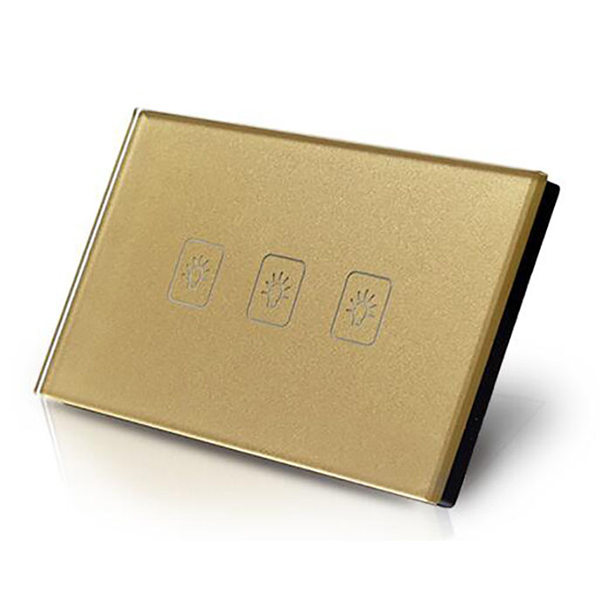Smart Switch: The Future of Home Automation
2025-03-07
As technology continues to evolve, so do the ways in which we interact with our homes. One of the most innovative and practical advancements in home automation is the smart switch. These devices offer convenience, energy savings, and enhanced control over your home’s lighting and electrical systems. If you are considering upgrading your home or office to a more connected space, understanding the benefits and features of smart switches can help you make an informed decision.
What is a Smart Switch?
A smart switch is an advanced electrical switch that allows you to control your home’s lighting or appliances remotely via a smartphone app, voice commands, or automated schedules. Unlike traditional mechanical switches, which require manual flipping to turn lights or devices on or off, smart switches are connected to your home’s Wi-Fi or Bluetooth network, enabling wireless control. Many smart switches are compatible with home automation systems like Amazon Alexa, Google Assistant, or Apple HomeKit, allowing you to control your devices using simple voice commands.
Key Features of Smart Switches
1. Remote Control
One of the most significant advantages of smart switches is their ability to be controlled remotely. Using a smartphone app or home automation platform, you can turn lights on or off, adjust brightness, or set timers from anywhere, as long as you have an internet connection. This remote control feature offers convenience, especially for those who may forget to turn off lights or appliances when leaving home.
2. Voice Control
With integration into voice assistant systems like Alexa, Google Assistant, or Siri, smart switches enable hands-free control. Simply say a command like, “Turn off the living room lights,” and the switch will respond accordingly. This feature adds a layer of convenience, particularly for those with mobility challenges or anyone who simply enjoys the ease of voice interaction.
3. Scheduling and Automation
Smart switches allow users to create schedules for when lights or appliances should turn on or off. This can be helpful for setting up automated lighting that mimics your daily routine or enhances security when you're away from home. For instance, you can set your outdoor lights to turn on at dusk and off at midnight, or program your bedroom lights to gradually brighten in the morning to simulate a natural sunrise.
4. Energy Efficiency
Another key benefit of smart switches is their potential to reduce energy consumption. Many smart switches feature energy monitoring, allowing you to track the amount of electricity used by connected devices. This data can help you identify patterns in energy usage, encouraging more efficient habits. Additionally, smart switches can be programmed to turn off lights or appliances when they are no longer needed, reducing wasted energy and lowering utility bills.
5. Integration with Other Smart Devices
Smart switches are designed to integrate seamlessly with other smart home devices. For example, they can work in conjunction with motion sensors, smart thermostats, or smart security systems. This integration enables a more comprehensive home automation experience. For example, you could set up your lights to turn on when motion is detected in a room, or link your smart switch to your security system to ensure your lights are on when the system is armed.
Types of Smart Switches
There are several types of smart switches available, catering to different needs and preferences:
1. Smart Light Switches
These are the most common type of smart switch and are used to control the lighting in a room. They allow you to adjust the brightness, set schedules, and control the lights remotely. Some models also offer dimming features, which can help create the perfect ambiance for any situation.
2. Smart Outlet Switches
Smart outlet switches are designed to control the power flow to appliances or devices plugged into them. With these switches, you can turn off devices such as lamps, fans, or other electronics remotely. This type of smart switch is great for appliances that don’t have built-in smart functionality but still need to be controlled remotely.
3. Smart Fan Switches
For homes with ceiling fans, smart fan switches can be a game-changer. These switches allow you to control fan speed, set schedules, or adjust the fan remotely. Some models even come with the ability to integrate with voice assistants for hands-free operation.
4. Smart 3-Way Switches
If you have a multi-way switch setup, where a single light is controlled by multiple switches in different locations (e.g., at the top and bottom of a staircase), a smart 3-way switch is essential. These switches allow you to control your lights from multiple locations, all while maintaining smart capabilities.
Benefits of Using Smart Switches
1. Convenience and Comfort
Smart switches make controlling your home’s lighting and appliances more convenient than ever. Whether you want to turn off the lights in a room without getting out of bed or schedule your home’s lights to turn on as you arrive, smart switches add a layer of comfort that traditional switches simply cannot provide.
2. Improved Security
By automating your lights and appliances, smart switches can enhance your home’s security. You can set lights to turn on at random intervals while you’re away, creating the illusion that someone is home. This can deter potential burglars or intruders. Additionally, integrating your smart switches with a security system allows for more comprehensive monitoring.
3. Increased Property Value
Home automation features like smart switches can increase the value of your property. As smart home technology becomes more popular, prospective buyers are increasingly looking for homes that offer the convenience and energy-saving benefits of smart devices. Installing smart switches in your home can make it more attractive to potential buyers.
4. Easy Installation
Many smart switches are designed for easy installation, with some models simply requiring you to replace existing standard switches. Others may need a bit more technical knowledge, especially if you are integrating the switch with a home automation hub. Regardless, the installation process is generally straightforward and can be completed with basic tools.
Conclusion
Smart switches represent a major step forward in home automation, offering not just convenience and ease of use but also energy savings, security, and improved functionality. Whether you are looking to reduce your carbon footprint, enhance your home’s security, or simply enjoy a more comfortable living space, smart switches can be an excellent investment. As the technology continues to evolve, smart switches are likely to become an even more integral part of everyday life, making our homes smarter, safer, and more efficient.



